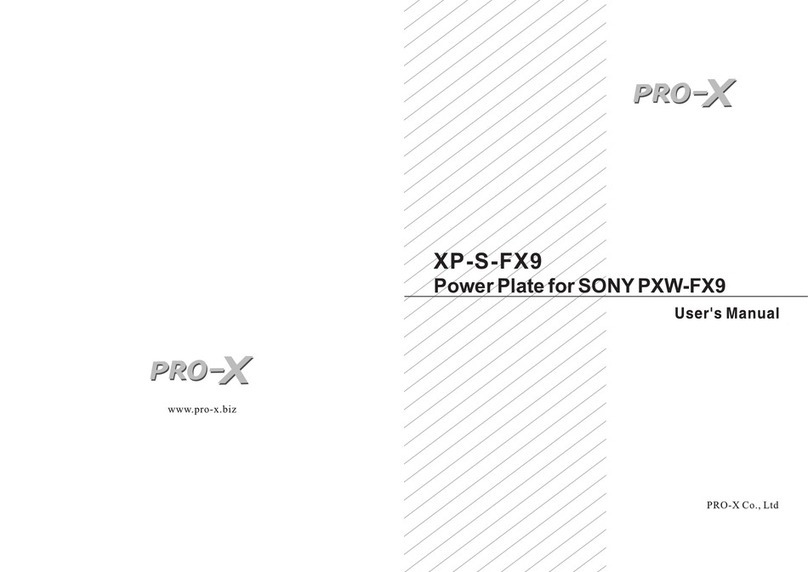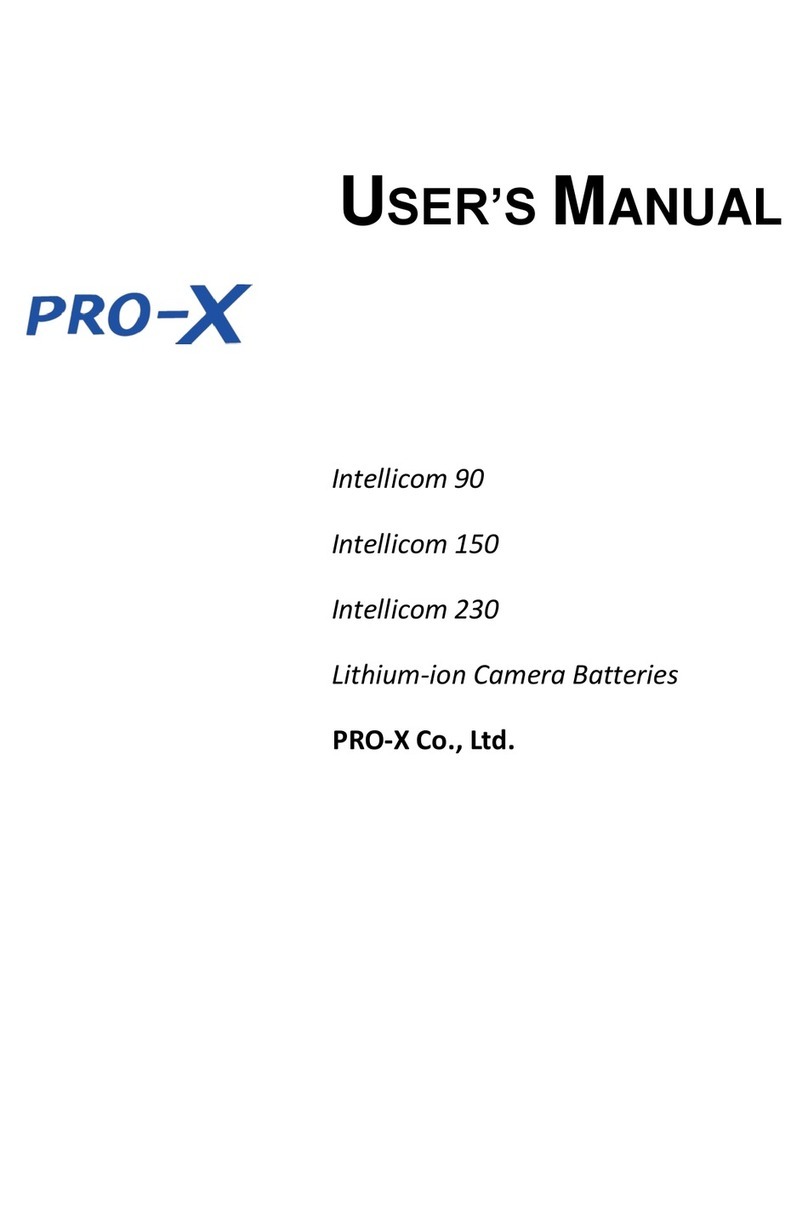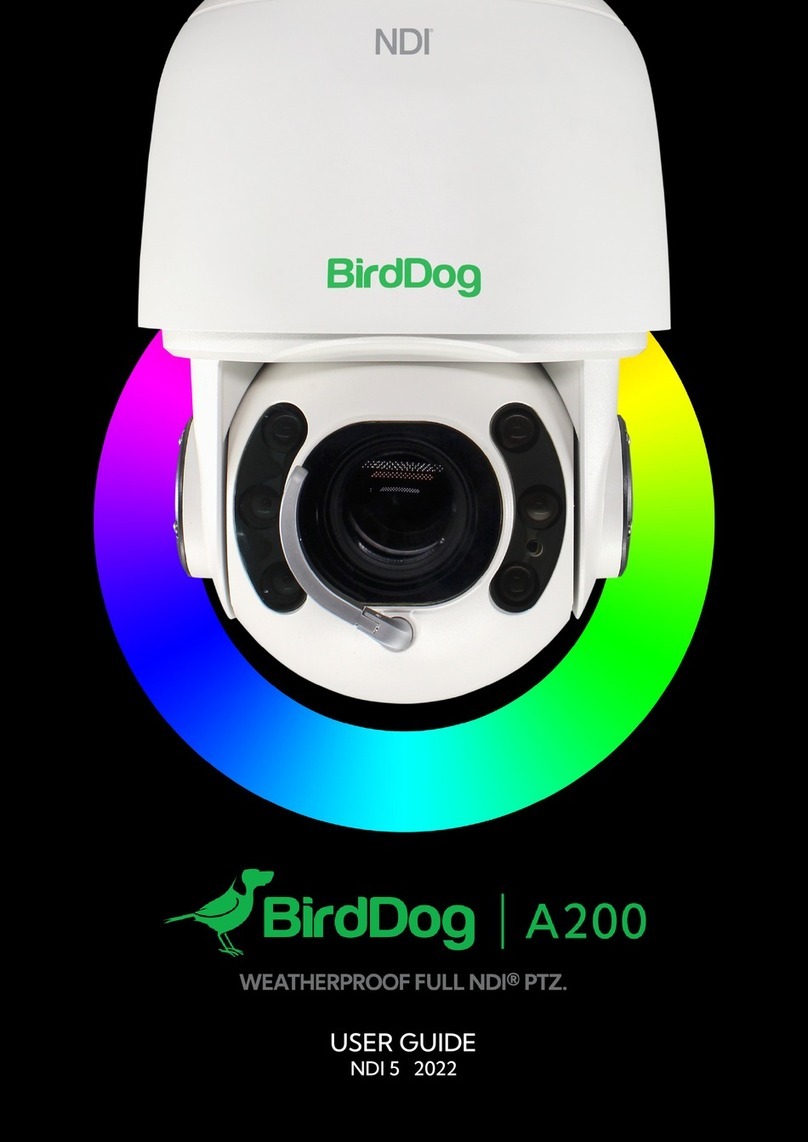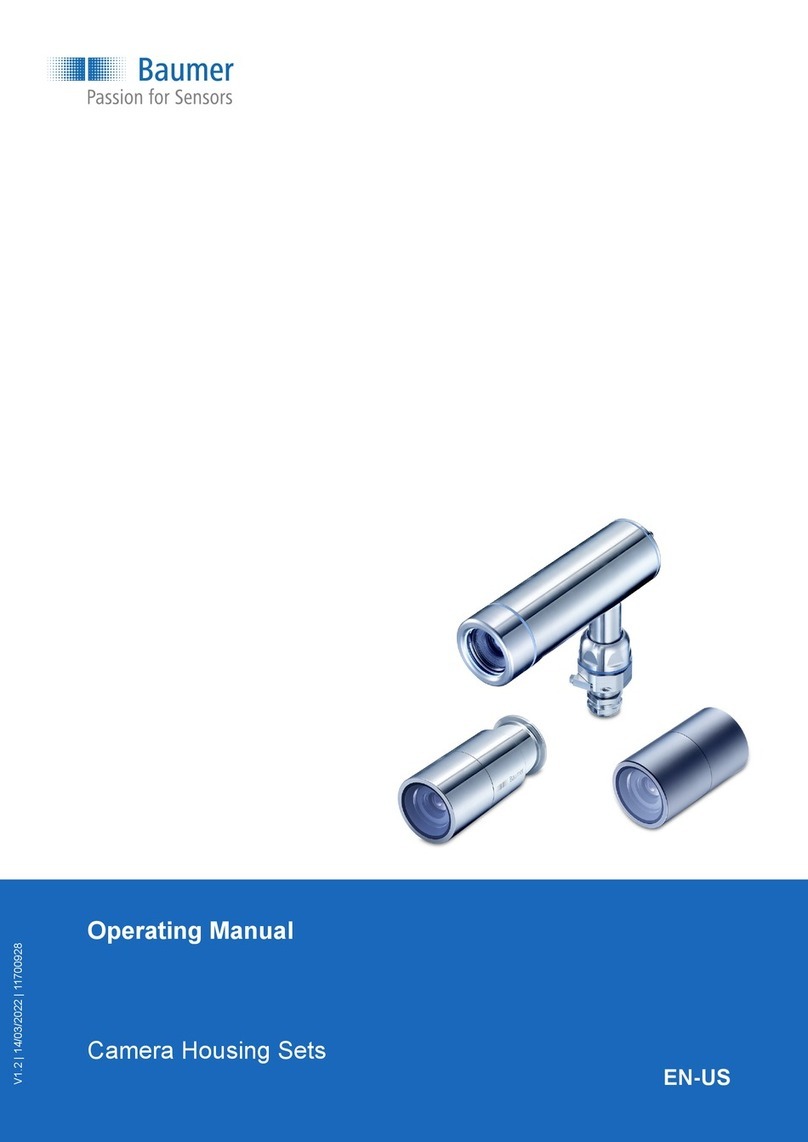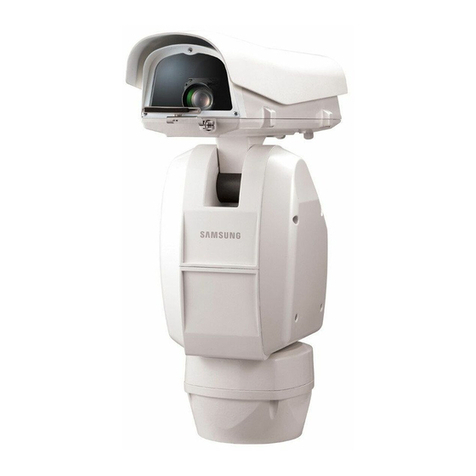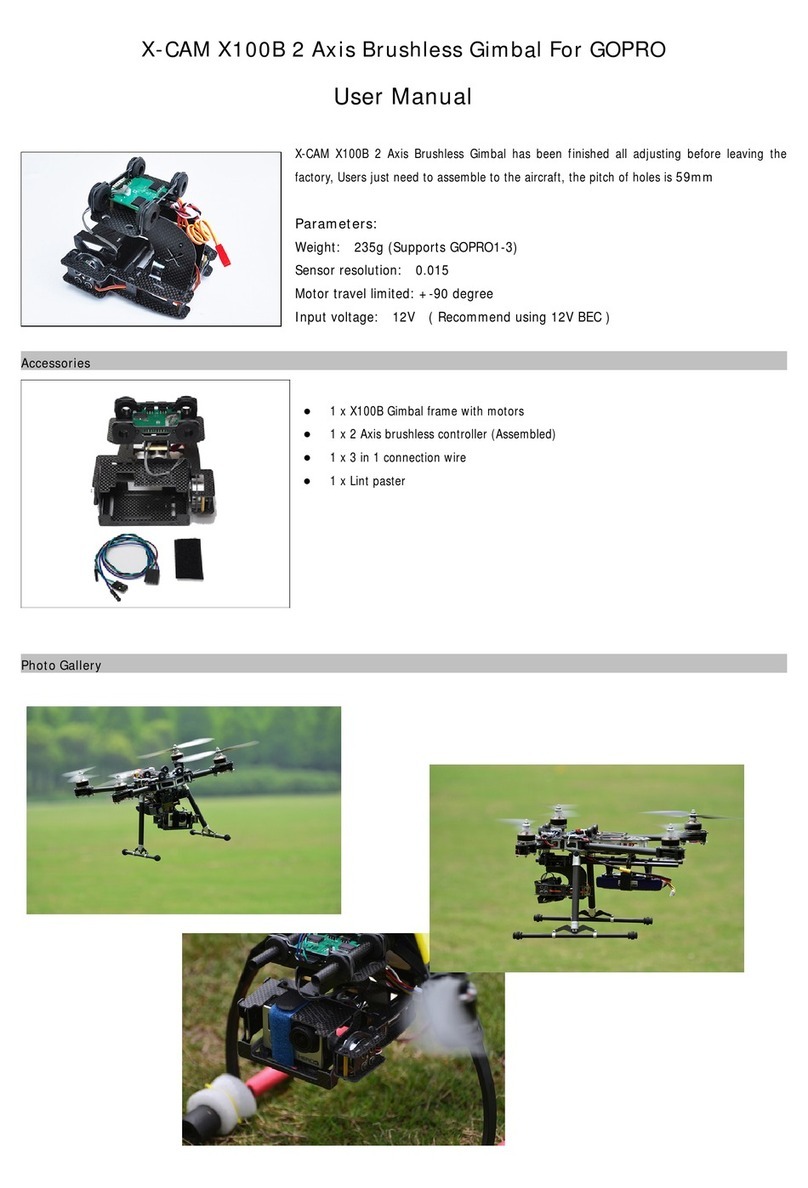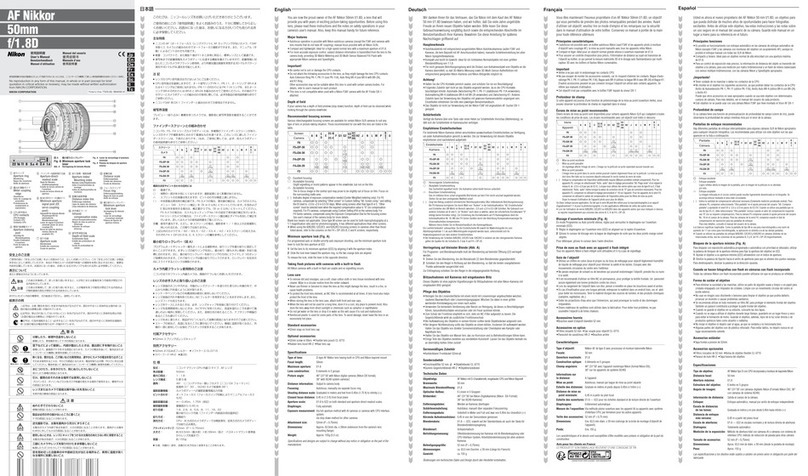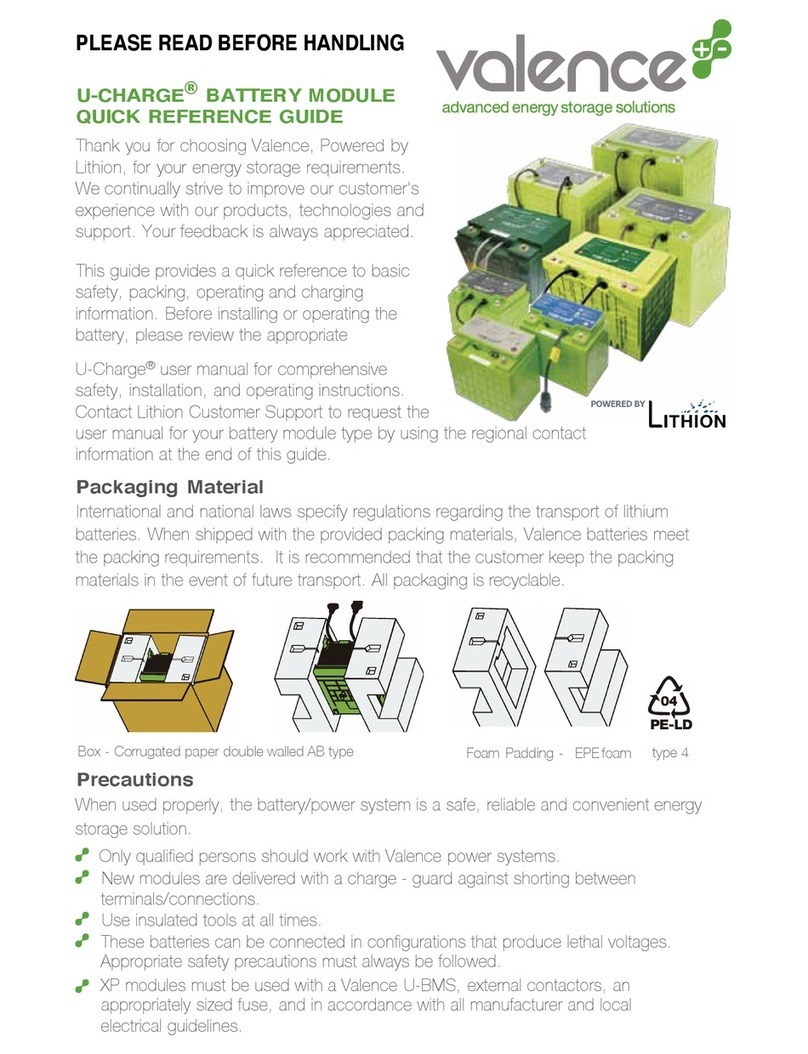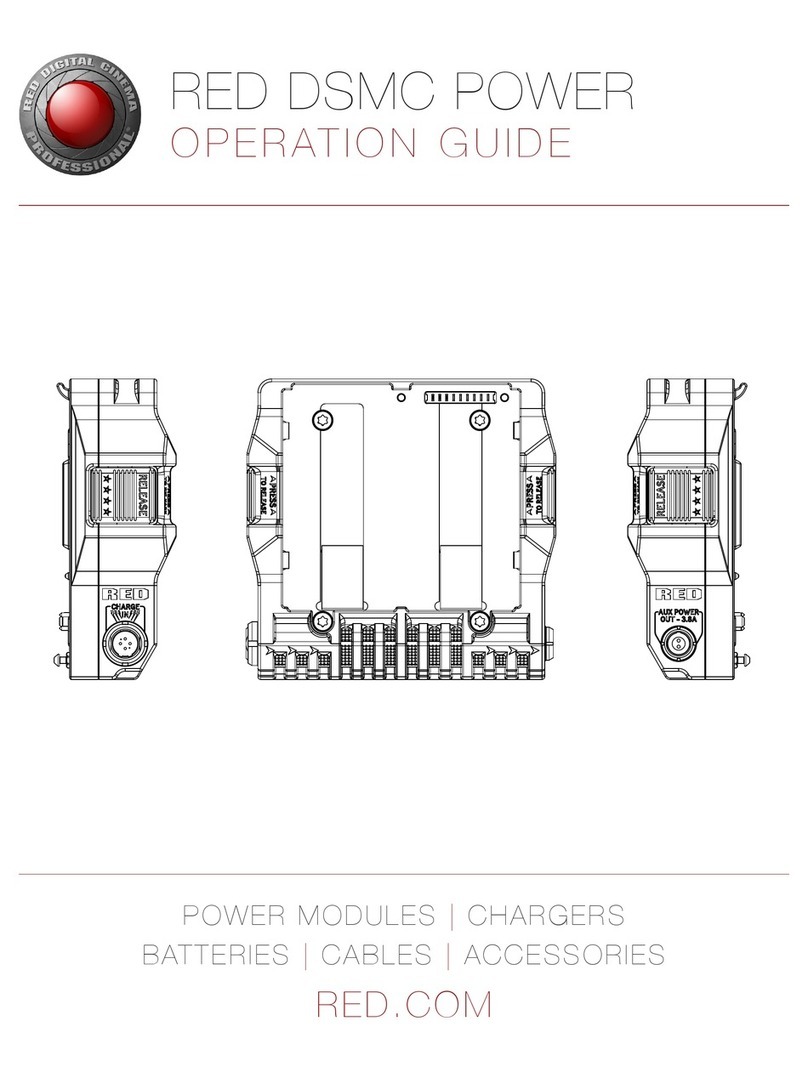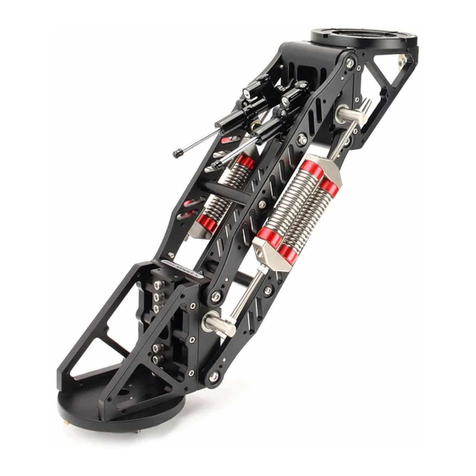ProX SP Series User manual

SP
Series Lithium ion Camera Batteries-


Safety
● Read and follow these instructions.
● Charge with recommended chargers only.
● Use with professional video cameras or other video equipment.
● Due to IATA Li-ion battery air transport regulations, all batteries packed by themselves
are discharged to approximate 30% of the rated design capacity. Please do charge the
battery before using.
Handling
● Do not expose the battery to heat and never throw it in fire or use flammable or combustible
materials and solvents around batteries or chargers. Do not use outside of specified
temperature ranges (above 60℃/140℉).
● Do not immerse in water. Keep the battery dry and away from excessively dry or humid
environments.
● Do not attempt to open the outer case or break apart the battery. Do not pierce or drill into the
outer case of the battery.
● Do not subject the battery to extreme physical impact or pressure, or place any object across
the terminals that could cause it to short.
● Do not attempt to use the battery when is damaged.
● Do not use the battery in a corrosive environment. Damages occur from salt water, seawater,
acid, alkali, corrosive gas, etc.
Electrical Connection
● Do not short the contact pins with any metal object. Do not carry or store the battery with
metal equipment.
● Do not use, store or place the battery in an electrostatic area.
● Always keep the terminals (of the battery and the charger) clean.
● Do not solder on the contact pins directly.
● Wrong connection between the equipment and the P-Tap will cause short circuit of the
equipment. Please pay extra attention to the P-Tap polarities.
Using
● Please note that the outer case will become hot when the battery is discharged in
high temperatures or with high loads.
● Do not use if the battery displays unusual characteristics (odd odor, discoloration,
etc.) when in use, during charge or in storage.
● Keep away from fire if the battery leaks fluid or has an unusual smell.
● In case of leakage, immediately wash your body parts contacting the battery fluid
thoroughly with clean water and contact your PRO-X representative for further
instructions.
1

● Immediately seek medical attention if battery fluid gets into contact with your eyes.
● All Lithium-ion batteries have a finite life. If the battery exhibits noticeably shortened
run-time,the battery should be replaced immediately. Shortened run-time is indicative
of at least one cell, which has reached end of life. Under no circumstances attempt to
“recondition” this battery by repeated charging and discharging.
● Set low voltage alarm of the camera to 12V before usage(Refer to user’s manual
of your camera).Change the battery with another one when low voltage alarm of
the camera warns.
● Stop charging immediately if the battery fails to charge within the designated time.
● Store in cool and dry conditions to help lengthen the battery's service life.
● During long periods of inactivity, please remove the battery from the equipment.
● When store the battery for extended period (more than one month), it is recommended
to discharge the battery to 50% of the full capacity, and charge it to more than
50% once in 3 months.
General Information
● Compact rechargeable Li-ion camera battery.
● High efficiency rechargeable cells ensure reliable performance.
● Built-in MCU control and four-step remaining capacity LED display (25% for
each step) show the battery’s remaining capacity precisely.
● A P-Tap can be used to power peripheral equipments or as charge port.
● USB port outputs 5V/2A.
● Internal protection circuits monitor cell balance, temperature, overcharge and
overdischarge to insure safe and proper operation.
Charging and Storage
● SP-L100V
2
Capacity Check button
Four-step Remaining
Capacity LED Display Negative
Charging/Discharging
USB P-Tap
Main connector
V Type Mount

● SP-L300V
● SP-L150V
3
Negative
Charging/Discharging
Main connector
V Type Mount
Capacity Check button
Four-step Remaining
Capacity LED Display
P-Tap USB or P-Tap
Capacity Check button
Four-step Remaining
Capacity LED Display
P-Tap USB or P-Tap
Negative
Charging/Discharging
Main connector
V Type Mount

Four-step Remaining Capacity LED Display
Remaining capacity is shown by four .
● When the check button is pressed, the LEDs indicate the battery capacity accordingly.
● LEDs
Please make sure to check the polarity of P-Tap connector prior to plug-in.
P-Tap
● P-Tap output can be used for PRO-X lights.
● PRO-X travel charger is required to charge the battery through P-Tap.
● Please confirm the shape of connector and polarity of plug side prior to
connect with receptacle. Please do not force it when it feels difficult to plug in.
0%
<10%
10%-25%
25%-50%
50%-75%
≥75%
Remaining
Capacity(%) LED1
OFF
FLASH
ON
ON
ON
ON
LED2
OFF
OFF
OFF
ON
ON
ON
LED3
OFF
OFF
OFF
OFF
ON
ON
LED4
OFF
OFF
OFF
OFF
OFF
ON
Table1
4

Charging
●
or brochure for details.
● The battery can be charged in any charge condition.
● We recommend charging the battery in an ambient temperature (in door) of between
0~40℃ (32℉~104℉), 10~30℃ (50℉~86℉) is the best). If you charge the battery
outside this temperature range, you may not be able to efficiently charge the
battery.
● If the ambient temperature is below 0℃ (32℉), it will not be fully charged even if the
designated charging time has passed.
● The four-step remaining capacity LED display indicates the current capacity
according to table 1.
● The battery will exhibit a small amount of self discharge. PRO-X recommends always
charging the battery before use.
Estimated charging times may vary with different chargers. Refer to PRO-X website
USB
● USB connector for power supply (DC5V/2.0A).
● USB connector is Type A (USB cable should be Type A as well).
● Do not draw power from USB while charging as it may interrupt charging , cause a charger
error, or damage the charger.
Attaching a Battery
To attach a battery to Mount adaptor:
1. Slide the battery onto the adaptor, ensuring the V Type Mount is aligned in the
corresponding slots.
2. The battery is fully engaged when the latch makes an audible“click”.
V Type
5

Releasing a Battery
1. Depress the latch and hold.
2. Slide the battery off the adaptor.
Specifications
6
6
Model
Mount Type
Voltage
Capacity
Dimension
Net Weight
96.5×149.1×37.8 mm
3.80×5.87×1.49 in
165×89×49.5 mm
6.50×3.50×1.95 in
165×89×67 mm
6.50×3.50×2.64 in
98Wh 154Wh
SP-L100V SP-L150V
0.55kg/1.21lbs
284Wh
0.96kg/2.12lbs 1.36kg/3.0lbs
SP-L300V
V Type
14.8V

Lithium ion Battery Air Transport Notes
●
(IATA) and the International Civil Aviation Organization (ICAO) regulations apply
to all Lithium-Ion battery transport.
Transport by Commercial Airline / Carry-on Luggage
● Lithium ion batteries packed by themselves (UN3480, PI 965) (not contained
in or packed with equipment) must be shipped at a state of charge (SoC) not
exceeding 30% of their rated design capacity.
-
Dangerous Goods Regulations 49CFR Parts 100-185, Air Transport Association
Type of battery
Capacity less
than 100 Wh
Capacity between
101~160 Wh
Capacity more
than 160 Wh
YES
When protected
from damage and
short circuit
NO
NO
In equipment
YES
YES
Airline approval
required
NO
Allowed in carry-on baggage?
Spares
YES
When protected from
damage and short circuit
YES
Up to 2 batteries
When protected from
damage and short circuit,
and airline approval required
NO
In equipment
YES
YES
Airline approval
required
NO
Spares
Allowed in checked baggage?
●
restriction or local policies, before travelling.
We recommend that you confirm with your carrier of choice, to determine any further
7

Transport as Air Cargo
Dangerous Goods Regulations, 60th Edition
1.Batteries packed by themselves UN3480, PI 965
● Lithium ion batteries of UN3480 shall be shipped at a state of charge less than 30% of the
rated capacity.
● Batteries must be marked with the Watt-hour rating on the outside case.
Section IA applies to lithium ion batteries with a Watt-hour rating in excess of 100 Wh,
which must be assigned to Class 9 and are subject to all of the applicable requirements of
these Regulations. The Watt-hour rating must be labeled on the outside of the battery
case. Packing must meet the Packing Group II performance standards. The package will
require a Class9 label, name and address of shipper and consignee, proper shipping
name, UN number (UN3480 Lithium ion batteries) etc. A dangerous goods declaration that
contains the sender and consignee information must be submitted to the transporter.
Limit per package: Passenger aircraft = Forbidden
Cargo aircraft only = 35kg
Section IB applies to lithium ion batteries with a Watt-hour rating not exceeding 100 Wh
packed in quantities that exceed the allowance permitted in Section II. When transporting
three or more batteries in one package or more than one package, the package must be
classified as Class9 Dangerous Goods. The package must pass a 1.2 meters drop test. In
addition, it is necessary to label the following on the package: Class9 label, lithium battery
handling label, UN number (UN3480 Lithium ion batteries), name and address of shipper
and consignee, proper shipping name, etc. A dangerous goods declaration that contains
the sender and consignee information must be submitted to the transporter.
Limit per package: Passenger aircraft = Forbidden
Cargo aircraft only = 10kg
Section II applies to lithium ion batteries with a Watt-hour rating not exceeding 100 Wh
packed in quantities not exceeding 2 batteries in one package (no more than 1 package).
Batteries of this section are NOT classified as Class9 Dangerous Goods. The package
must pass a 1.2 meters drop test. In addition, a lithium battery handling label is required on
the shipping package. A Shipper's Declaration for Dangerous Goods is not required. An
overpack must be marked with the word “Overpack” and labeled with the lithium battery
label, unless the label(s) on the package(s) inside the overpack are visible.
Limit per package: Batteries ≤ 100Wh = 2 batteries
Passenger aircraft = Forbidden
8

2.Lithium Ion Batteries Packed with Equipment UN3481, PI 966
● Batteries must be marked with the Watt-hour rating on the outside case.
Section I applies where the equipment is packed with lithium ion batteries with a Watt-
hour rating in excess of 100 Wh, which must be assigned to Class 9 and are subject to
all of the applicable requirements of these Regulations. The number of cells or batteries
in each package must not exceed the appropriate number for the equipment's operation,
plus two spares. A Class9 label will be needed on the package.
Limit per package: Passenger aircraft = 5kg
Cargo aircraft only = 35kg
Section II applies where the equipment is packed with lithium ion batteries with a Watt-
hour rating not exceeding 100 Wh. Each package of cells or batteries, or the completed
package must be capable of withstanding a 1.2 m drop test. Each package must be
labeled with a lithium battery handling label. A Shipper's Declaration for Dangerous
Goods is not required. An overpack must be marked with the word “Overpack” and
labeled with the lithium battery label, unless the label(s) on the package(s) inside the
overpack are visible. The equipment must be secured against movement within the outer
packaging and must be equipped with an effective means of preventing accidental activation.
Limit per package: Passenger aircraft = 5kg
Cargo aircraft only = 5kg
3.Lithium Ion Batteries Contained in Equipment UN3481, PI 967
● Batteries must be marked with the Watt-hour rating on the outside case.
Section I applies where the equipment contains lithium ion batteries with a Watt-hour
rating in excess of 100 Wh, which must be assigned to Class 9 and are subject to all of
the applicable requirements of these Regulations. A Class9 label will be needed on the
package.
Limit per package: Passenger aircraft = 5kg
Cargo aircraft only = 35kg
Section II applies where the equipment contains lithium ion batteries with a Watt-hour
rating not exceeding 100 Wh. The number of cells or batteries in each package must not
exceed the appropriate number for the equipment's operation, plus two spares. Each
package must be labeled with a lithium battery handling label. A Shipper's Declaration
for Dangerous Goods is not required. An overpack must be marked with the word
“Overpack” and labeled with the lithium battery label, unless the label(s) on the package(s)
inside the overpack are visible. The equipment containing the batteries must be secured
against movement within the outer packaging and be packed so as to prevent accidental
operation during air transport.
Limit per package: Passenger aircraft = 5kg
Cargo aircraft only = 5kg
9

This manual suits for next models
3
Table of contents
Other ProX Camera Accessories manuals
Popular Camera Accessories manuals by other brands

Guilin Feiyu Technology
Guilin Feiyu Technology SPG Plus instruction manual
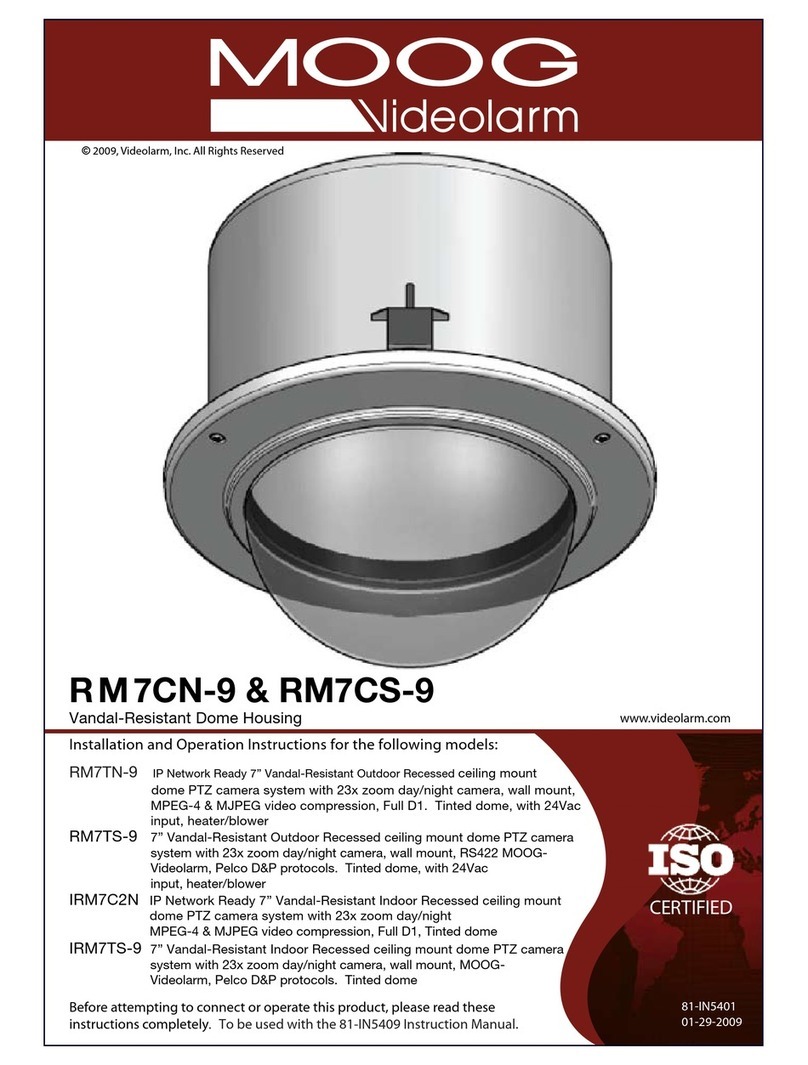
Moog Videolarm
Moog Videolarm SView IRM7CN-3 Installation and operation instructions
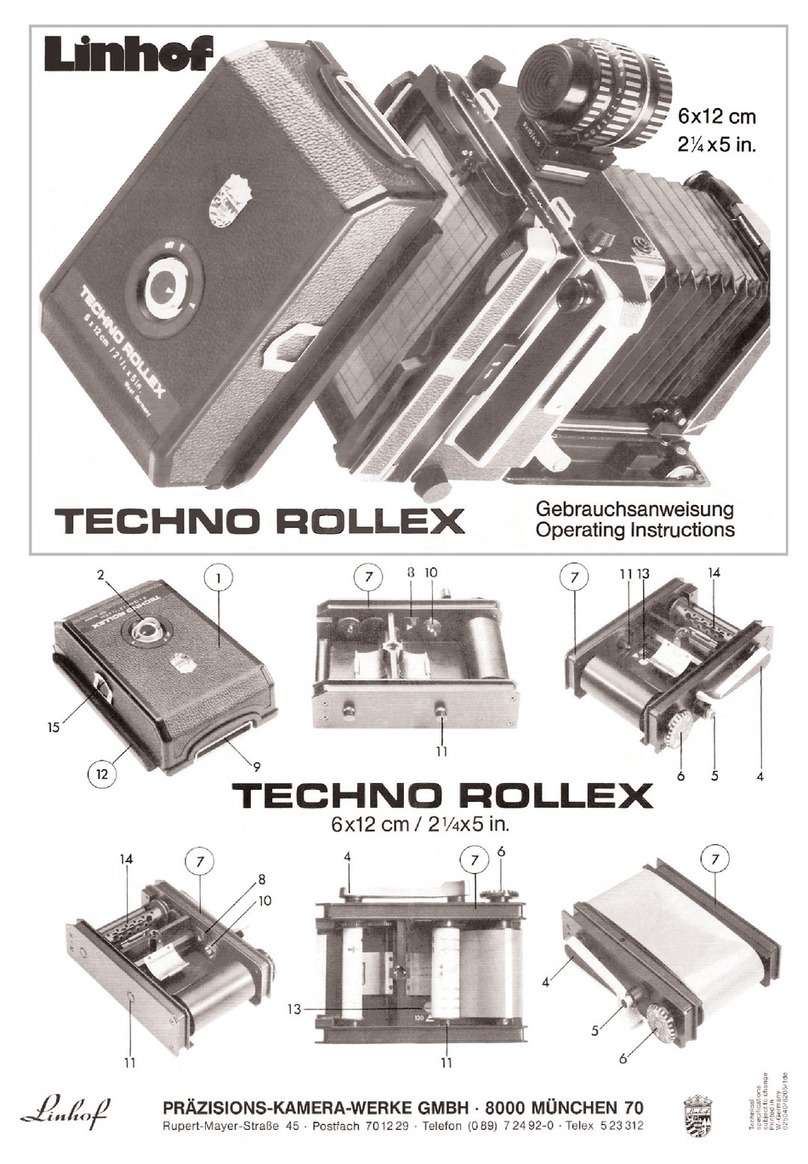
LINHOF
LINHOF TECHNO ROLLEX operating instructions

Panasonic
Panasonic WV-QDC500S operating instructions
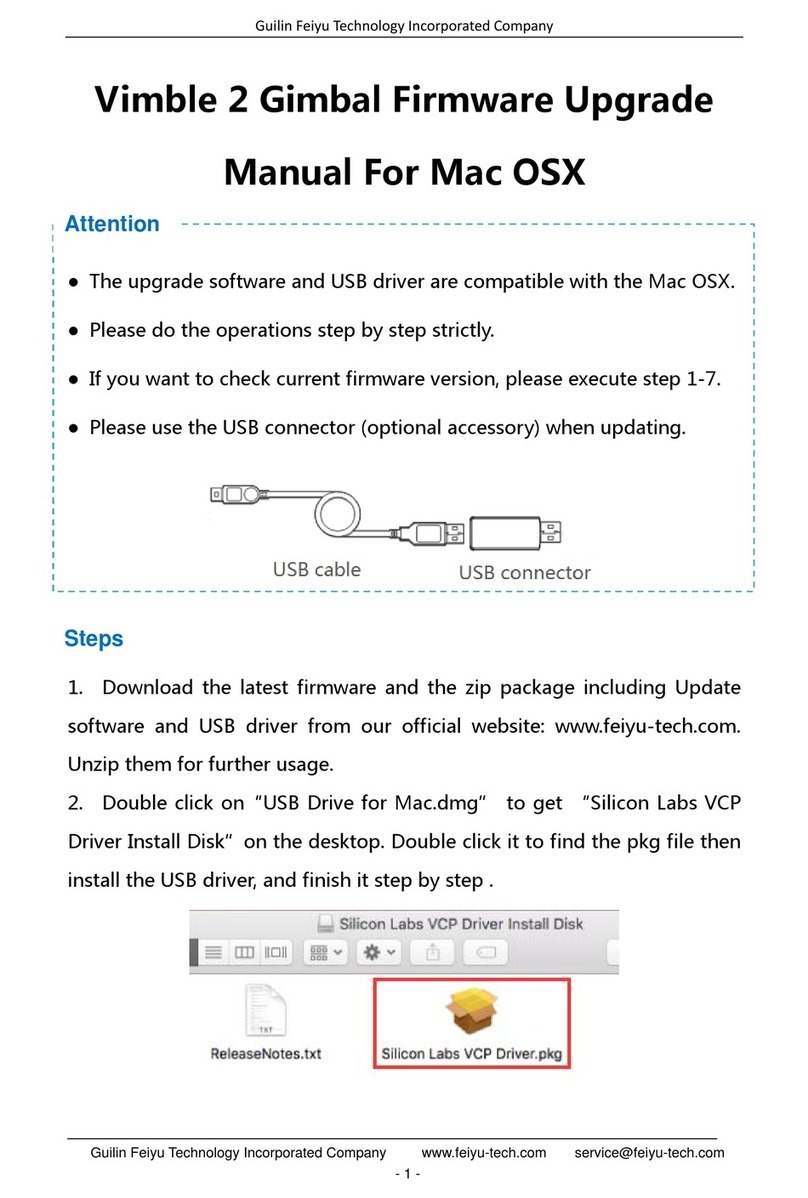
Guilin Feiyu Technology
Guilin Feiyu Technology Vimble 2 manual
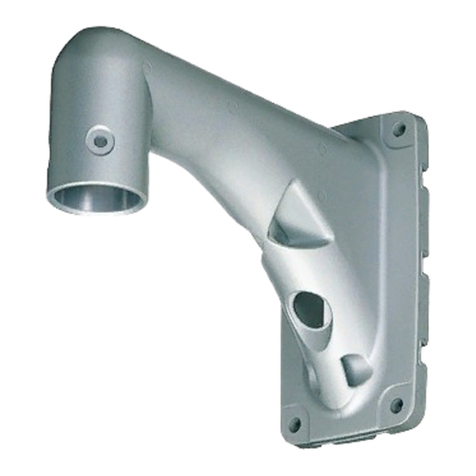
Panasonic
Panasonic WV-Q122E operating instructions
